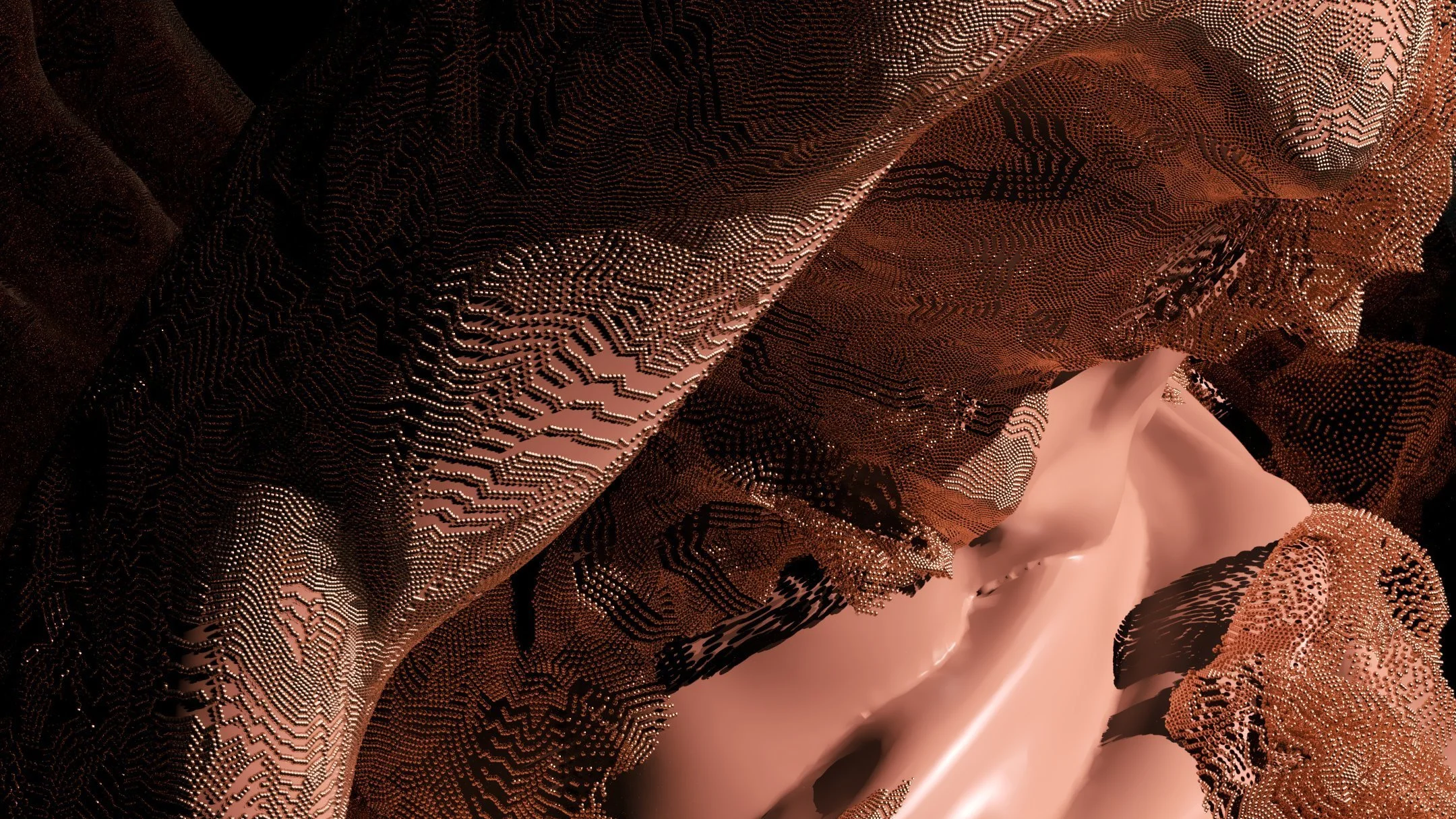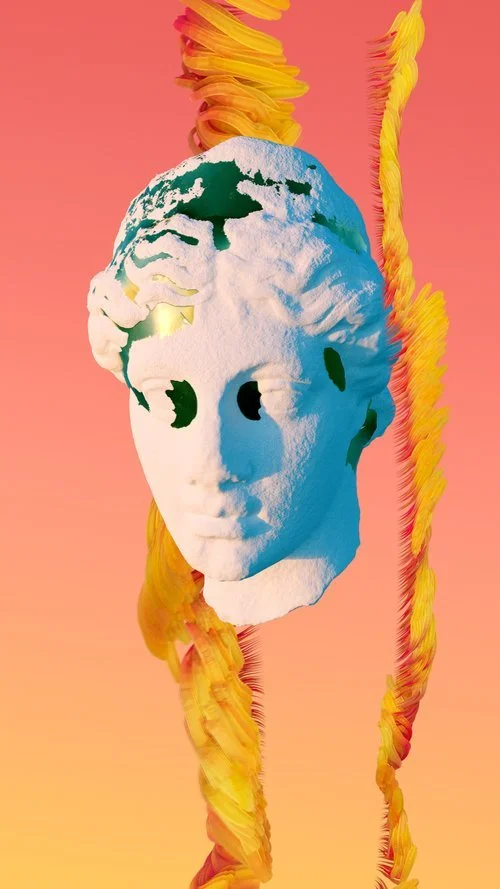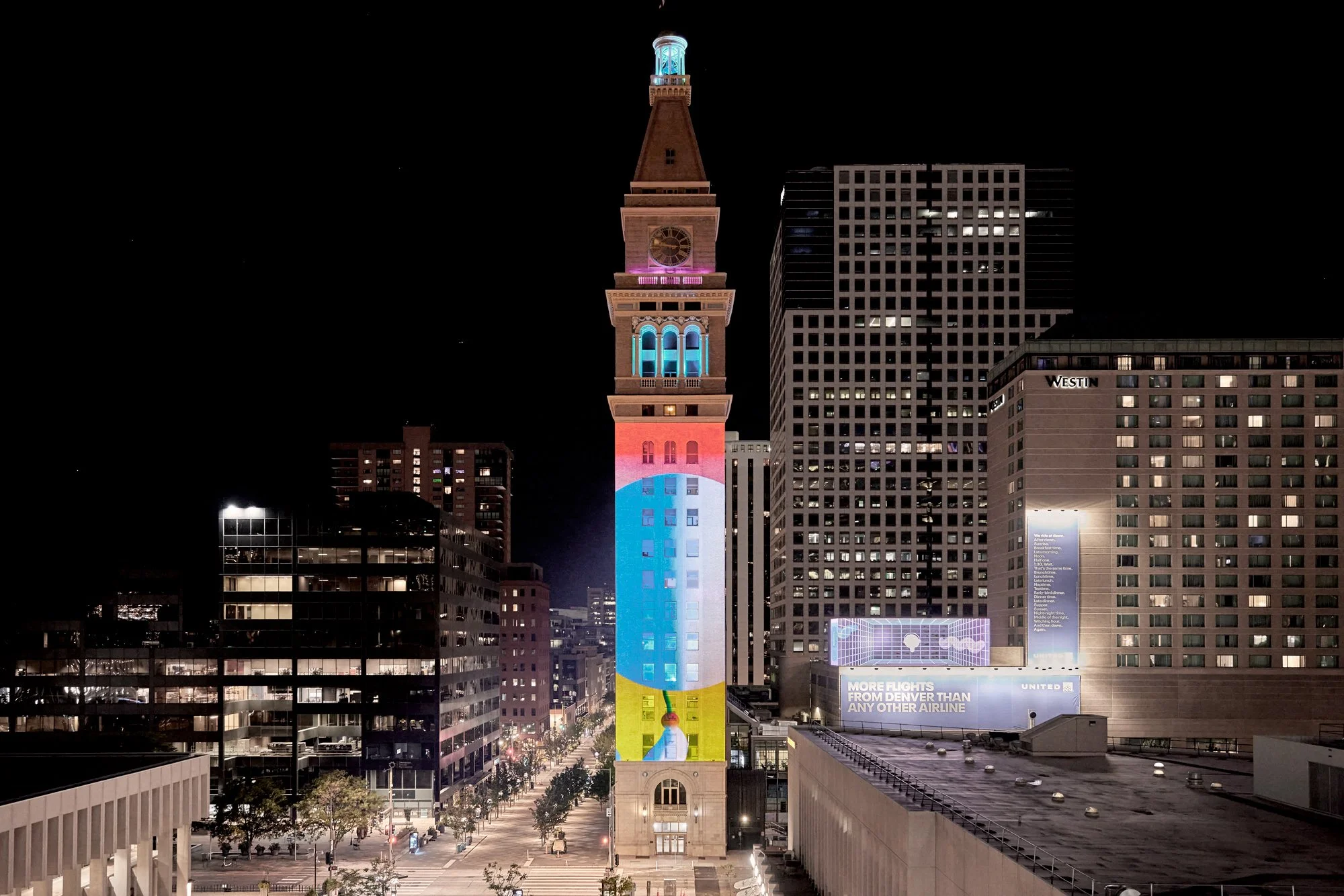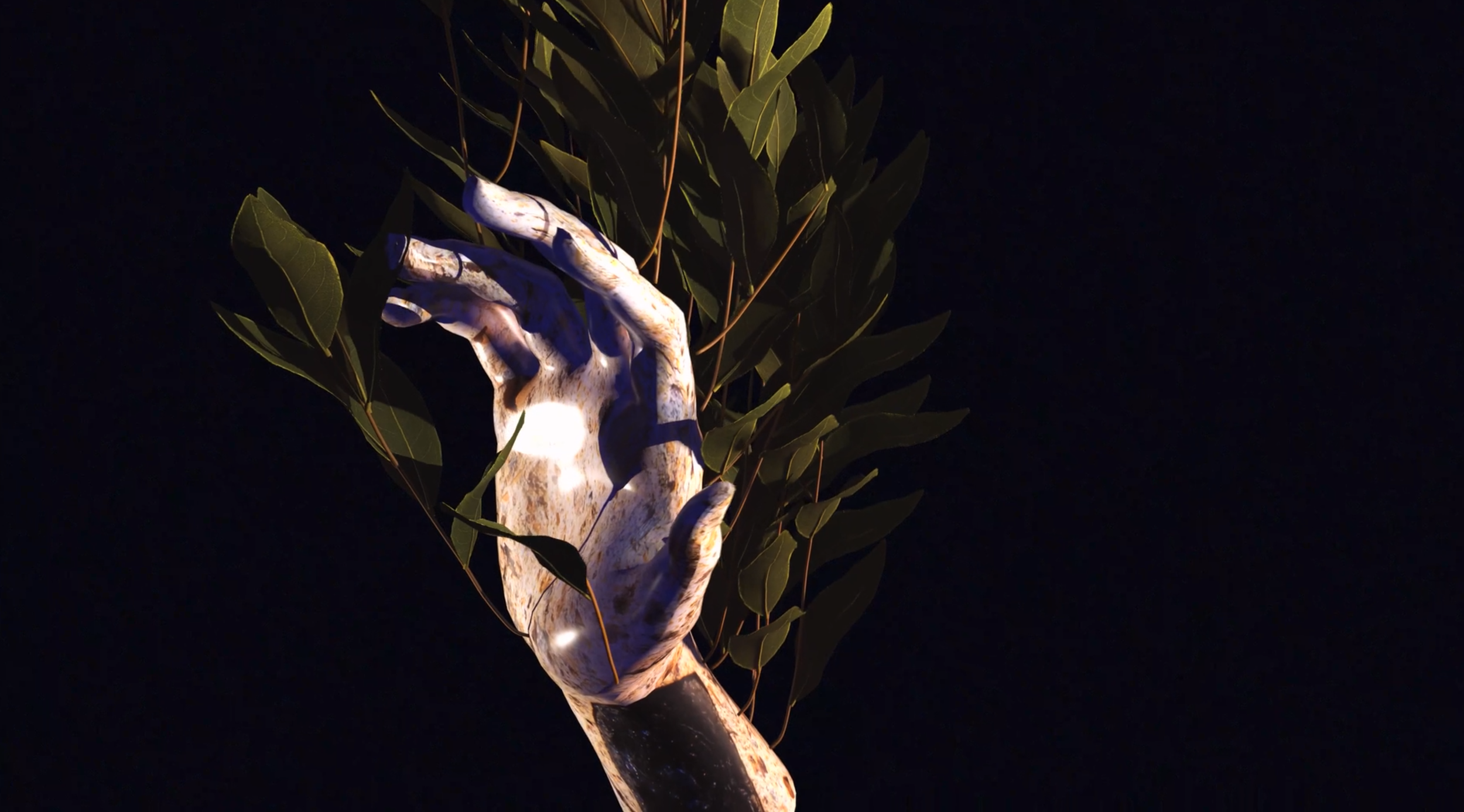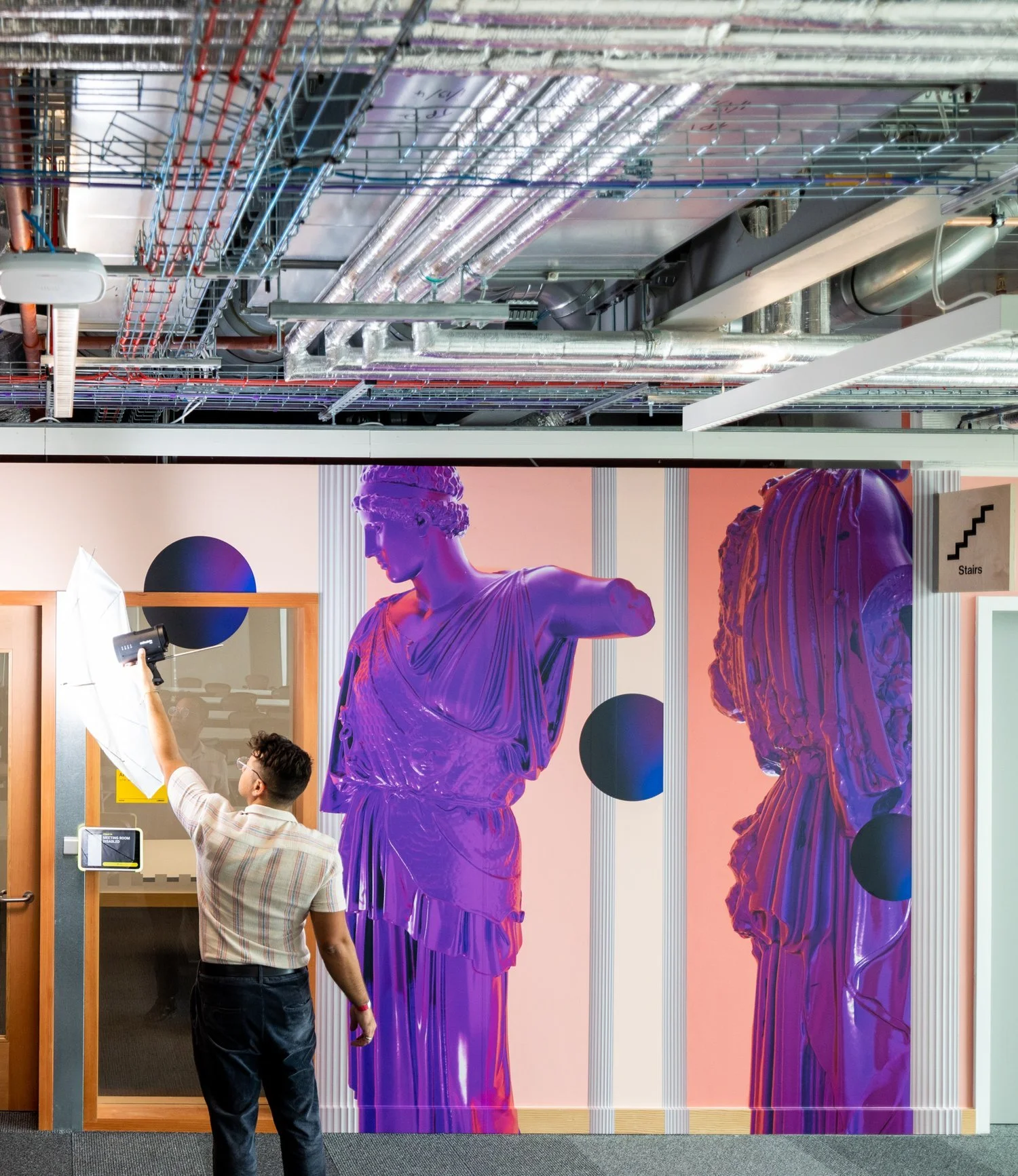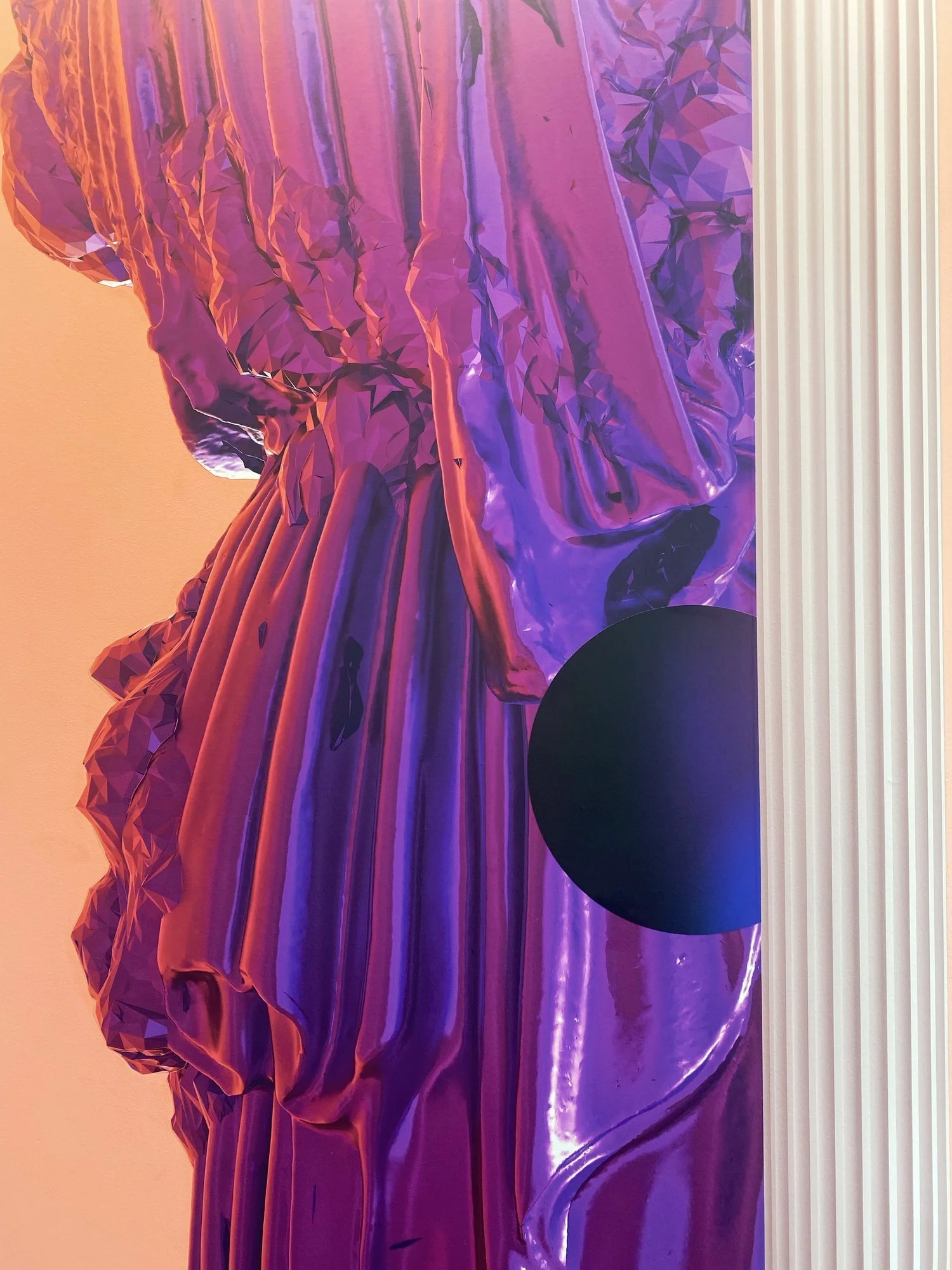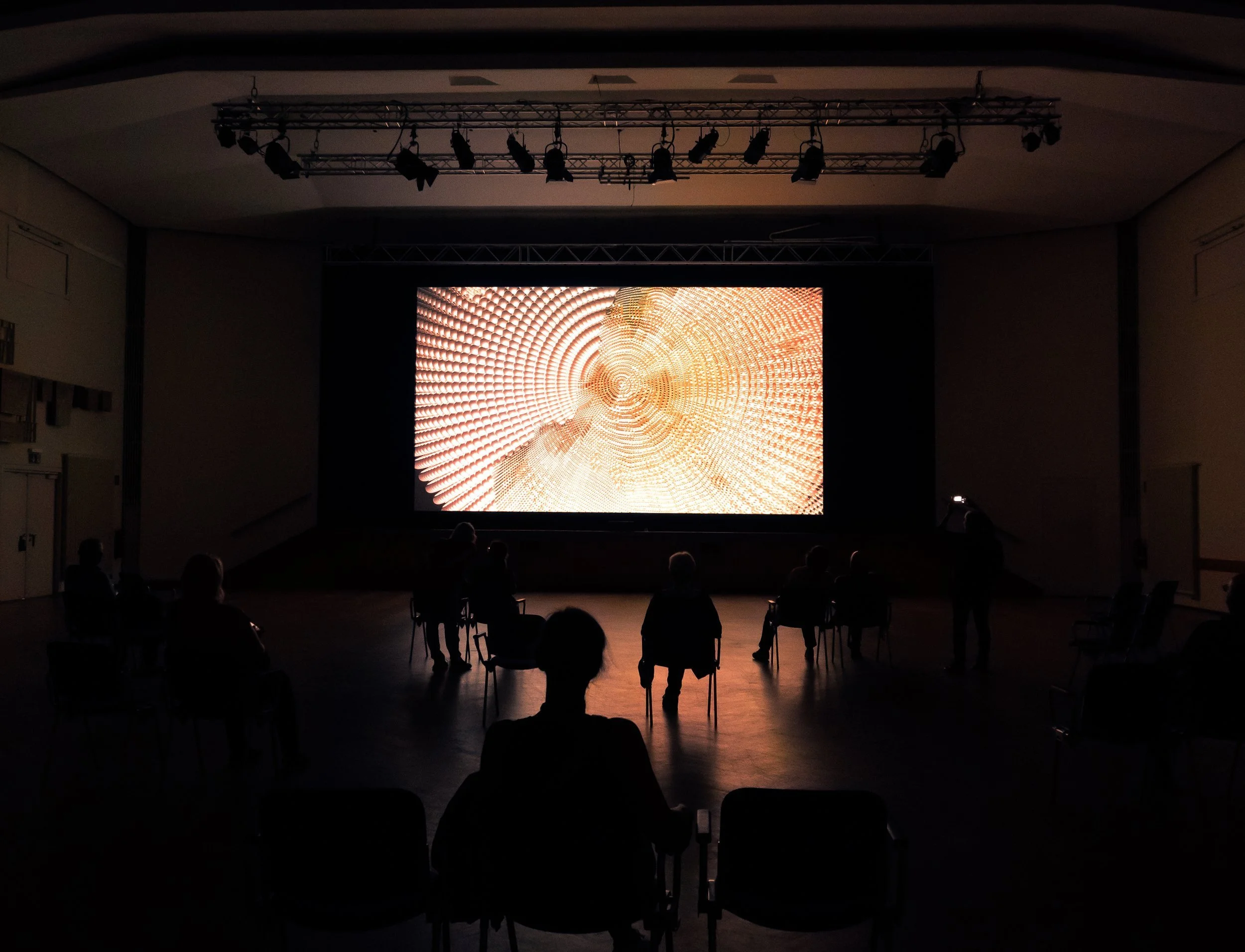Where Athena Meets CGI: Reimagining the Classical with Valentina Ferrandes
By Cansu Peker
Valentina Ferrandes is a London-based visual artist and designer from southern Italy whose work merges CGI, procedural animation, and storytelling with archival and environmental materials. Drawing from classical iconography and archaeological sources, she crafts narratives that bridge past and present through immersive technologies. Her digital explorations often blur the line between representation and abstraction, transforming landscapes, objects, and recordings into dreamlike reinterpretations shaped by code.
With a background in both Fine Art and Humanities, Ferrandes brings a layered, research-driven approach to her practice. She was shortlisted for the Aesthetica Art Prize (2023), awarded the Emerging Scene Arts Prize in Dubai, and recognized by the Japan Media Arts Festival. Her work has been shown at international venues including Visions du Réel, DokuFest, EMAP Osnabrück, and Rencontres Internationales. Currently completing an MA in 3D Environment Art at Escape Studios, she continues to explore the tension between ancient memory and digital transformation.
We asked Valentina about her art, creative process, and inspirations.
AUREA
You've explored classical iconography through immersive tech — what draws you to these ancient symbols in such futuristic formats?
Classical iconography holds a strong timeless resonance — myths and their representation offer a symbolic framework that continues to echo across cultures and eras. These symbols have stayed with me since childhood, and in my work, I revisit them not as historical artifacts but as living narratives, open to transformation.
By using digital technologies — from 3D scanning to generative software and immersive environments — I reinterpret these motifs in ways that feel fluid and otherworldly. I’m particularly interested in the tension between representation and abstraction. Much of what I create is derived from physical sources — landscapes, objects, recordings— but processed through code, the original subject often becomes obscured. The result is a kind of computational reinterpretation of the world: sometimes recognizable, sometimes almost dreamlike. It's that in-between space, where something ancient meets the unfamiliar logic of software, that captivates me.
BLOOM
If you could create an immersive digital environment inspired by any archaeological site, where would it be and why?
More than an archaeological site, I’m drawn to magical, charged places like the Parco dei Mostri in Bomarzo, or Villa D'Este, in Italy. Their surreal Baroque gardens filled with enigmatic sculptures — open mouths, leaning houses, mythical creatures half-buried in moss. They feel like landscapes caught between dream and ruin, where symbolism escapes reason.
I’d love to recreate something similar as immersive digital environments — not as a literal replica, but as a reimagined psychic space.It’s the kind of place where myth and memory intertwine — a theatre of the subconscious. That, to me, is more evocative than any monument: a site of poetic resistance to logic and time.
DAAPHNE
Coming from southern Italy and now living in London, do you find your sense of place shaping your work in unexpected ways?
Definitely. My roots shape the emotional texture of everything I make — the southern Mediterranean light, the landscapes, and my deep connection to classical forms and the artists who came before me and shaped beauty. My early exposure to art history still influences how I build and structure images today. However, living in London has completely changed the way I think and work. It's a city that thrives on contrast and diversity, and being here sharpens your sense of self. You gain a more profound understanding of your own perspective, which lends your work a richer depth and resonance, both in terms of creativity and technology.
In a space saturated with constant innovation, London teaches you to be intentional with the tools you use. You’re not just chasing the newest tech for its own sake; you’re choosing what serves your vision. Whether I'm working with 3D scanning, procedural software, or layering digital relics into new compositions, I always ask myself, "What does this tool add to the feeling, texture, and vision I'm trying to build?"
BLOOM
When I feel lost or disconnected, my work becomes my home. Making becomes a place of belonging — grounded, timeless, and poetic.That’s what tech allows too: to sculpt something immaterial into a living, immersive space where distant ideas, memories, and emotions can live side by side. This contrast really comes through in my work for the META offices, created as part of the Open Arts Series. With Midday Muse I imagined two iconic images merging—a contemporary tech giant and the ancient goddess of strategy —brought together through an oversized mural of Athena on the 13th floor of the company’s London office.
Sometimes when two seemingly opposite images sit side by side, or are taken out of their context, they become open to new interrpretations. For META the installaltion space started to feel less like a regular office and more like a museum hall, even though the mural aesthetic remains sharply modern. BLOOM also builds on this idea of contrast. It was a video mapping piece commissioned by the Digerati Emerging Media Festival for Denver Night Lights. I was faced with a tall building that resembled the Venice Campanile, and that immediately set the tone. I decided to juxtapose abstract visuals with 3D scans of the Cleveland Apollo, blending them with natural forms. The sculpture fit beautifully within that towering public canvas.
It was incredible to see this oversized public projection —these classical images—still holding so much power, glowing against the Denver skyline.
BLOOM
What role does sound play in your process, especially when working with environmental recordings or archival footage?
Sound is essential to my process — it often comes before the moving image. My very first experimental films revolved around haunting soundscapes: fragments of voices in different languages, snippets of narrative lifted from old movies. Every listener would bring their own associations—some might recognize certain fragments, others might resonate with specific frequencies. It’s always intimate and unique. Now that my woork is more CGI based, sometimes I collaborate with musicians like Michele Di Martino, who transforms archival material into layered, haunting textures and hypnotic polyphonies. I’m especially drawn to sounds that feel tactile — textured, raw, almost physical. When I’m working on a piece that deconstructs visual texture, I want the viewer to not just see the work, but to feel it. What I love about layering sound this way is its ability to suggest off-screen narratives. Recursive rhythms open up space for ambiguity and emotional tension. There’s something organic about it—each listener tries to catch a fragment, making the soundscape feel like a deeply personal experience.
In Daaphne, most of the voiceover is in English, but there are moments when Russian voices break through—recordings of phone calls from mothers searching for their sons along the Ukrainian border. There’s even a child’s voice singing a Russian lullaby. I produced the film right at the beginning of the conflict, and I became captivated by that lullaby. While thematically it stays in the background, it acts like a timestamp—quietly collapsing figment of time within the narrative. Some listeners might catch it, but mostly it goes unnoticed.
DAAPHNE
DAAPHNE
Your work beautifully bridges the past and present — what first inspired you to blend archival material with CGI and storytelling?
I grew up in a small town in southern Italy, built right above the ruins of an ancient Greek colony and beside a majestic temple dedicated to Demeter, the goddess of fertility. My childhood was steeped in that landscape — rugged nature, sun-bleached ruins, and myths that felt almost alive. These stories weren’t distant legends; they were woven into the terrain. A kind of everyday magic.
When I began making art, I naturally gravitated back to those fragments, archives and museums were the place to observe and study them. I’ve always been fascinated by Ernesto De Martino’s writing on magic and ritual — how myth can shape how we read reality, especially in times of uncertainty. Older works like The Oyster Effect and Other Than Our Sea, which received a jury Mention at Japan Media Art Festival, tell of how powerful archival narratives can be. At first, I was drawn to the rawness of ancient relics and their symbolic weight, but over time, I found myself increasingly pulled toward the theatricality of the Baroque and the elegance of classicism more broadly and in a more visual way.
There’s something emotionally rich in those layered aesthetics — the contrast, the balance, the ornate beauty. Using CGI and contemporary software, I try to reframe this imagery, not as museum pieces, but as speculative, digital canvases. It’s about preserving their emotional force while shifting how we experience them. A clear example is my work Daaphne, where I reimagined a passage from Ovid's Metamorphoses using AI Dungeon, an automated AI writing tool for games. The irish Margaret Kylcoine gave voice to a water nymph whose story was generated by a GPT model trained on game narratives. The way AI Dungeon described the nymph’s body actually became the foundation for the film’s visual direction.
For me, tech opens up new ways of remapping cultural heritage—ways that feel surprising, emotional, and timeless.
Midday Muse @META
Midday Muse @META
Can you tell us about some of your favorite pieces? What makes them special to you?
Aurea is a piece I feel deeply connected to. It was inspired by Bernini’s extraordinary sculpture—capturing that exact moment when the water nymph tries to escape Apollo and transforms into a laurel tree.
What really stayed with me was how the sculpture conveys a moment of emotional and physical violence. It’s a scene where the female figure has to metamorphose—literally change form—in order to survive. She turns into something emotionless, something untouchable. There’s a softness and tragedy in that act of transformation, captured so powerfully in stone by Bernini. I wanted to take that moment and turn it into a moving 3D texture using scans and digital processes.
By working with the image on a molecular level, I deconstructed the figures—two marble bodies dissolving into abstract particles. What emerged was unexpected: the narrative became less literal, more embodied, more felt than figurative.
AUREA
The piece was originally commissioned by the Schwabach Gold Biennale in Germany, but more recently it was shown in a hybrid space—somewhere between public and private—at Exposed Gallery in New York. The exhibition was curated by Anna Bouali from Ioginaity.
More recently, I’ve turned toward natural landscapes. I’m currently working on a project centered on saltpans and archaea — extremophile microorganisms that have existed since before human history. It’s a speculative visual fiction about more-than-human worlds, built using photogrammetry, 3D animation, and environmental recordings. Like Aurea, it’s deeply textural and layered with fragments of raw data collected from real places.
AUREA (Mark Granfensaal)


